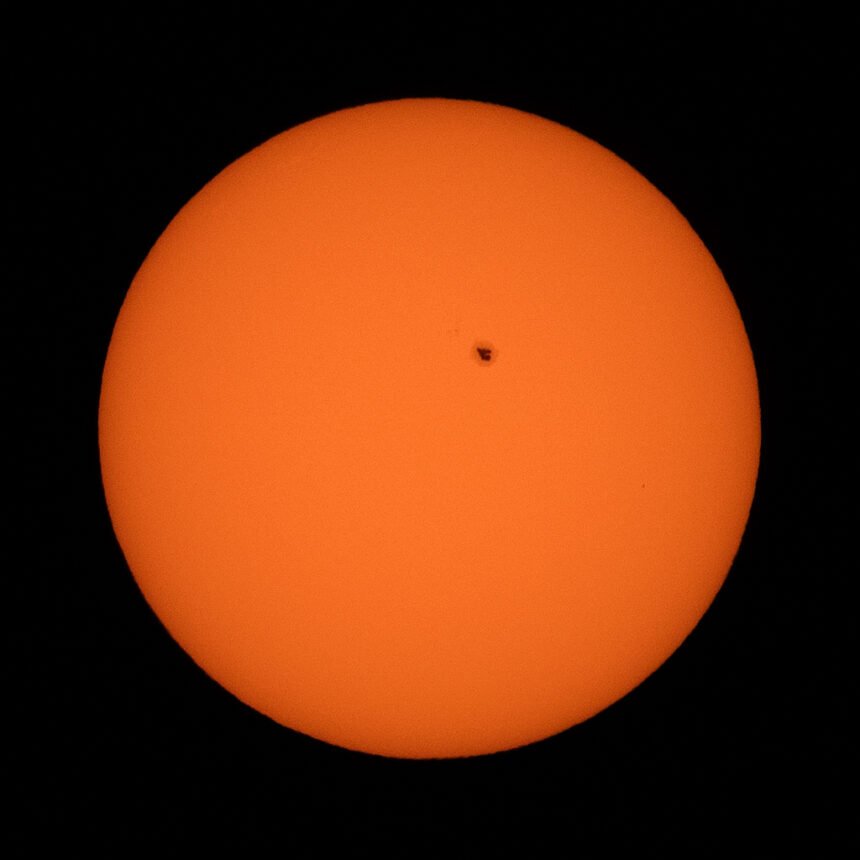In a fascinating celestial observation, the Mars rover Perseverance has provided valuable insights into a colossal sunspot making its way towards Earth. This captivating phenomenon has not only captured the attention of astronomers and space enthusiasts but also highlights the significance of robotic missions beyond our planet. Let’s delve into the details of this intriguing discovery.
The Perseverance Mars Rover’s Mission

Perseverance, NASA’s intrepid rover, was launched on July 30, 2020, with the primary goal of exploring the Jezero Crater on Mars. This mission seeks to uncover signs of past microbial life, study the planet’s geology, and pave the way for future human exploration of the Red Planet. However, Perseverance’s capabilities go beyond just Martian exploration.
Solar Observation from Mars
Perseverance is equipped with an advanced suite of scientific instruments, including the Mars Environmental Dynamics Analyzer (MEDA). While MEDA’s primary purpose is to monitor Martian weather, it has inadvertently become an asset for observing space phenomena as well. One such phenomenon is the observation of solar activity.

ALSO READ:https://news.hybriques.com/aditya-l1-mission-exploring-the-suns-mysteries
The Spectacular Sunspot
Recently, as Perseverance was conducting its regular operations on the Martian surface, it captured images of a massive sunspot on the surface of the Sun. Sunspots are temporary dark patches on the Sun’s surface caused by intense magnetic activity. They can vary in size and are known to affect solar radiation and space weather.
This particular sunspot, referred to as AR 2838, is colossal in scale. Its dimensions are so vast that it can be seen from Earth with the naked eye, provided appropriate safety measures are taken for solar observation. Sunspots like AR 2838 can have significant implications for our planet.
The Impact of Sunspots on Earth

Sunspots are not just intriguing celestial phenomena; they can also influence conditions on Earth. Solar flares and coronal mass ejections (CMEs) often originate from these sunspots. These events can release massive amounts of energy and charged particles into space, and when directed toward Earth, they can disrupt our planet’s magnetic field, causing geomagnetic storms.
Geomagnetic storms have the potential to interfere with communication systems, disrupt satellite operations, and even impact power grids. Therefore, monitoring and understanding sunspots like AR 2838 is of paramount importance for space agencies and scientists.
Know About India’s Mars Mission
Conclusion
The Mars rover Perseverance’s unexpected contribution to solar observation highlights the versatility of robotic missions in space exploration. Its ability to capture images of the massive sunspot AR 2838 serves as a reminder of the interconnectedness of celestial bodies in our solar system.
As scientists continue to study this extraordinary sunspot, the information gathered may help us better predict and mitigate the potential impacts of solar activity on Earth. Perseverance’s role in this endeavor exemplifies how space exploration extends beyond the boundaries of our home planet, providing valuable insights into the universe around us.
ALSO READ:https://news.hybriques.com/giant-asteroids-a-catastrophic-threat-to-civilization




































